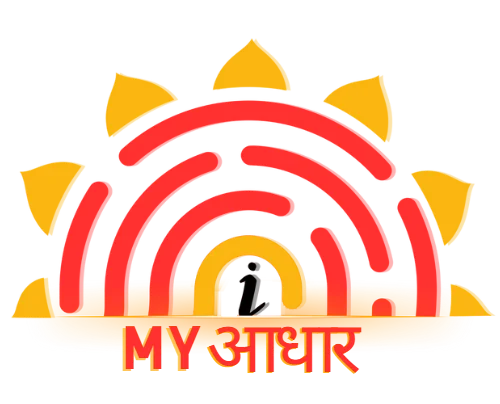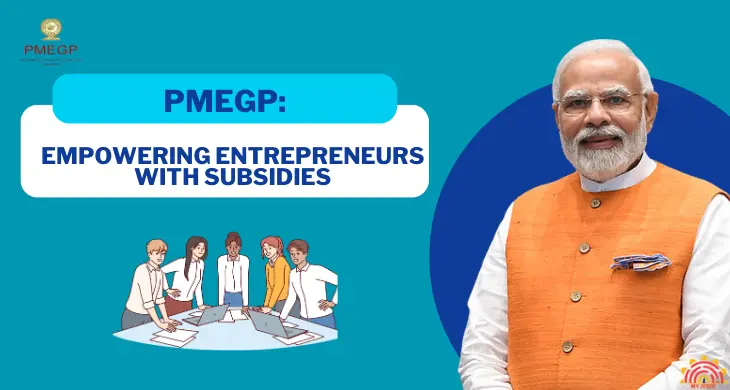In a country as different and dynamic as India, entrepreneurship has always been a pivotal motorist of profitable growth and employment generation. Feting the significance of fostering entrepreneurship, the Government of India introduced the Prime Minister’s Employment Generation Programme( PMEGP). This innovative scheme not only empowers aspiring entrepreneurs but also provides precious fiscal support in the form of subventions to turn their business dreams into reality. In this detailed blog, we will claw into the PMEGP scheme, understand its objects, eligibility criteria, and the benefits it offers to expiring entrepreneurs.
What is PMEGP?
It’s a credit- linked subvention scheme introduced by the Government of India with the end of promoting entrepreneurship and generating employment openings. PMEGP is enforced by the Ministry of Micro, Small, and Medium Enterprises( MSME) in cooperation with the Khadi and Village diligence Commission( KVIC) and the District diligence Centres( DICs). The primary ideal of PMEGP is to encourage the establishment ofmicro-enterprises and small businesses in both civic and pastoral areas of India. It provides fiscal backing and subventions to individualities who wish to start their own businesses.
The scheme operates by providing credit-linked subsidies to eligible entrepreneurs, reducing their financial burden and making it easier for them to access loans from banks and financial institutions. PMEGP plays a crucial role in empowering aspiring entrepreneurs and promoting the development of small-scale enterprises, which are essential components of India’s economic landscape.
Key Objectives:
The crucial objects of the Prime Minister’s Employment Generation Programme( PMEGP) are as follows:
- Promoting Entrepreneurship: PMEGP aims to encourage and promote entrepreneurship among individualities across colorful sectors of the frugality. It provides support to those who wish to establish their ownmicro-enterprises and small businesses. Employment Generation One of the primary pretensions of PMEGP is to induce sustainable employment openings, particularly insemi-urban and pastoral areas. By fostering the growth of small businesses, the scheme contributes to reducing severance rates.
- Supporting Micro and Small Enterprises: PMEGP is designed to support the growth and development of micro and small enterprises( MSEs). These enterprises play a significant part in the profitable fabric of India and contribute to its overall development.
- Fiscal backing: The scheme offers fiscal backing in the form of credit- linked subventions, making it more doable for aspiring entrepreneurs to pierce loans from banks and fiscal institutions.This financial support reduces the initial financial burden on entrepreneurs.
- Skill Development: PMEGP encourages skill development and self-employment. It empowers individuals with the necessary skills and resources to establish and manage their businesses effectively.
- Economic Development: By promoting the establishment of small businesses and micro-enterprises, PMEGP contributes to the overall economic development of the country. These businesses stimulate local economies and enhance livelihood opportunities.
- Inclusive Growth: PMEGP focuses on inclusive growth by providing opportunities to a wide range of individuals, including those from marginalized and economically weaker sections of society. It aims to bridge economic disparities by promoting entrepreneurship.
- Rural and Urban Development: PMEGP targets both rural and urban areas, aiming to create employment opportunities in various settings. This ensures balanced development across different regions of the country.
Eligibility Criteria for PMEGP:
The eligibility criteria for the Prime Minister’s Employment Generation Programme (PMEGP) are as follows:
- Age: Individuals aged 18 years and above are eligible to apply for assistance under PMEGP. There is no upper age limit for participation in the scheme.
- Educational Qualifications: There are no specific educational requirements for eligibility under PMEGP. However, applicants should possess the necessary skills and knowledge related to their chosen business or project.
- Project Cost: The total project cost, which includes both the capital expenditure and working capital, should fall within the prescribed limits set by PMEGP. The cost limits may vary for different categories of beneficiaries:
- General Category: The project cost limit is typically higher for general category applicants.
- Special Category: Individuals belonging to special categories, such as SCs, STs, OBCs, minorities, women, ex-servicemen, physically handicapped, etc., may have different project cost limits.
- Weaker Sections: There are specific project cost limits for individuals classified as “weaker sections.”
- Location: PMEGP is designed to benefit individuals in both rural and urban areas. Applicants can apply for assistance based on the location of their proposed business or project.
- Project Viability: The proposed project or business should be viable and capable of generating employment opportunities. It should have the potential for sustainable growth and contribution to the local economy.
- Loan Application: Applicants must approach banks or financial institutions to secure loans for their projects. The loan amount sanctioned by the bank should align with the project cost.
How Does it Work?
The Prime Minister’s Employment Generation Programme (PMEGP) operates through a structured process that aims to provide financial assistance and subsidies to aspiring entrepreneurs to establish their micro-enterprises and small businesses. Here’s how PMEGP works:
- Project Identification:
- Aspiring entrepreneurs identify a viable project or business they wish to undertake. This project could be related to manufacturing, service, or any other sector eligible under PMEGP.
- Project Report:
- A detailed project report is prepared by the entrepreneur, outlining all essential details related to the business. This report includes information such as the project’s investment requirements, revenue projections, employment generation potential, and expected outcomes.
- Application Submission:
- Entrepreneurs submit their project proposals and project reports to the District Industries Centres (DICs) or other designated authorities responsible for implementing PMEGP at the local level. These authorities assess the project’s feasibility and eligibility.
- Loan Application:
- Simultaneously, entrepreneurs approach banks or financial institutions to secure loans for funding their projects. The loan application process is initiated based on the viability of the project.
- Credit-Linked Subsidy:
- Once the project is approved by the respective authorities and banks, PMEGP provides a credit-linked subsidy. This subsidy is a significant incentive for individuals seeking to start their businesses. It reduces the financial burden on the entrepreneur, as a portion of the project cost is subsidized.
- Project Implementation:
- With the financial support from the bank loan and the subsidy from PMEGP, the entrepreneur proceeds to implement the project. This includes setting up infrastructure, procuring equipment, hiring personnel, and initiating business operations.
Benefits:
The Prime Minister’s Employment Generation Programme (PMEGP) offers several benefits to aspiring entrepreneurs and the Indian economy as a whole. Some of the key benefits of PMEGP include:
- Financial Assistance: PMEGP provides credit-linked subsidies to entrepreneurs, reducing their initial financial burden. This financial support makes it easier for individuals to secure loans from banks and financial institutions, as a portion of the project cost is subsidized.
- Employment Generation: PMEGP focuses on creating sustainable employment opportunities, particularly in semi-urban and rural areas. By promoting the establishment of micro-enterprises and small businesses, the scheme contributes to reducing unemployment rates.
- Empowering Entrepreneurs: PMEGP empowers individuals to become self-reliant entrepreneurs. It encourages entrepreneurship among people from diverse backgrounds and supports them in realizing their business ideas.
- Inclusive Growth: The scheme is designed to be inclusive, benefiting individuals from marginalized and economically weaker sections of society. PMEGP aims to bridge economic disparities by providing equal opportunities for entrepreneurship.
- Skill Development: PMEGP encourages skill development and self-employment. It equips individuals with the necessary skills and resources to start and manage their businesses effectively.
- Economic Development: By promoting the growth of micro and small enterprises, PMEGP contributes to the overall economic development of the country. These enterprises stimulate local economies, enhance livelihood opportunities, and boost economic growth.
Frequently Asked Questions:
Ques: What is PMEGP, and what is its primary objective?
PMEGP is the acronym for the Prime Minister’s Employment Generation Programme. Its primary objective is to promote entrepreneurship, generate employment opportunities, and facilitate economic development by providing financial assistance and subsidies to micro-enterprises and small businesses.
Ques: Who is eligible to apply for assistance under PMEGP?
Individuals aged 18 and above, regardless of educational qualifications, can apply for PMEGP assistance. Eligibility criteria may vary for different categories, including general, special, and weaker sections of society.
Ques: What types of projects are eligible for PMEGP assistance?
PMEGP supports a wide range of projects in sectors such as manufacturing, service, and more. The project should be viable, generate employment, and contribute to the local economy.
Ques: How does PMEGP provide financial assistance?
PMEGP offers credit-linked subsidies to entrepreneurs, reducing their financial burden. Subsidies are provided based on the project cost, which varies depending on the category of the beneficiary.
Ques: What is the role of banks in PMEGP?
Entrepreneurs are required to approach banks or financial institutions to secure loans for their projects. Banks play a crucial role in disbursing loans and monitoring repayment.
Conclusion:
The Prime Minister’s Employment Generation Programme( PMEGP) is a testament to the Indian government’s commitment to fostering entrepreneurship and promoting profitable growth. By furnishing fiscal backing in the form of subventions, PMEGP empowers aspiring entrepreneurs to turn their business ideas into reality. It not only helps in job creation but also contributes to the nation’s overall profitable development. For those with entrepreneurial dreams, PMEGP is a gateway to success and tone- reliance, making it a vital catalyst for a thriving entrepreneurial ecosystem in India.

